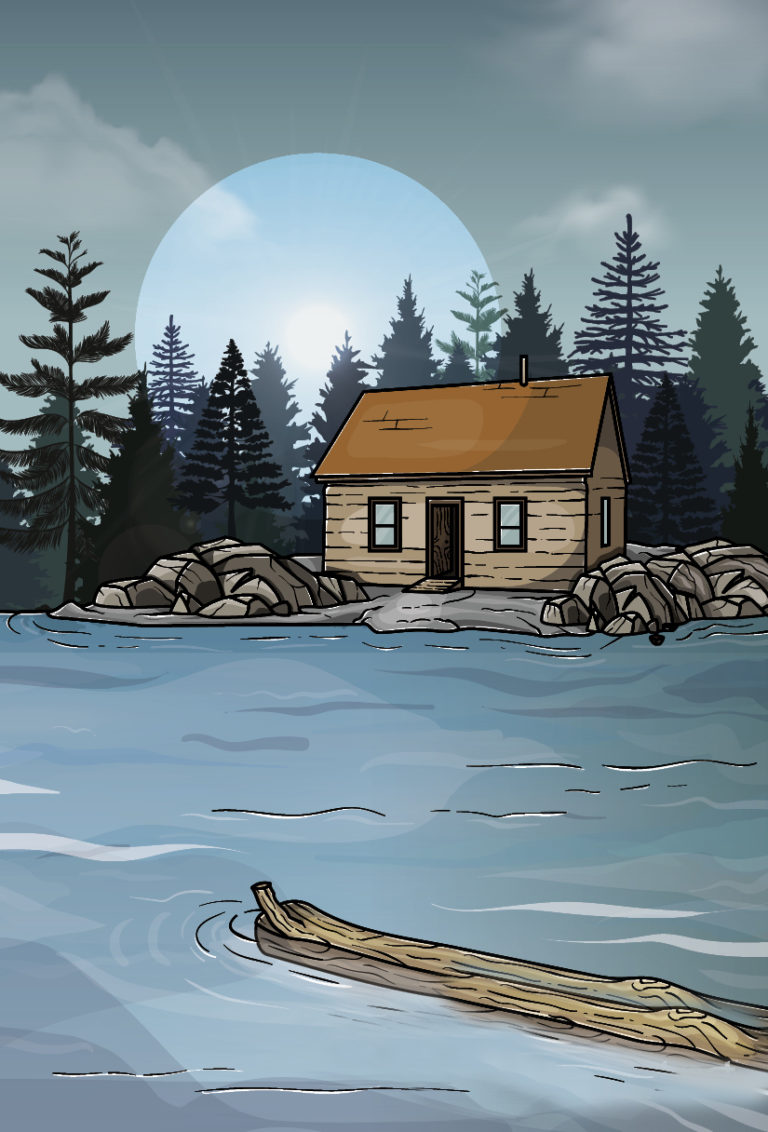
Walden; or Life in the Woods
- Diary
- Transcendentalism
What It’s About
The Simple Life
Henry David Thoreau may have escaped to the wilderness to write Walden; or Life in the Woods nearly two centuries ago, but it wouldn’t be hard to imagine his book sitting on a bestseller list next to Eat, Pray, Love or Under the Tuscan Sun. Writing during the early Industrial Revolution, just when the railroad had reached his hometown, he struggles with the purpose of life, the ever-quickening pace of work, the futility of materialism and the neglect of appreciating the beauty in the natural world. As canny today as it was in antebellum America, Thoreau’s book shows how far people have come and how little the human condition has changed over the decades.
Take-Aways
About the Author
Henry David Thoreau was born on July 12, 1817, in Concord, Massachusetts. His father was a failed grocer with a struggling pencil-making business, so when Thoreau entered Harvard College in 1833, his entire family chipped in to raise the price of the tuition. In 1835, in order to earn money, he took temporary leave to teach school. An avid reader, Thoreau studied philosophy, math, history, astronomy, theology, English, Greek, Latin, Italian, French, German and Spanish. After graduating in 1837, he began teaching public school in Concord, but after just two weeks, he resigned because he refused to use corporal punishment on his students. A year later, still unemployed, he founded a private school with his brother John, which featured unorthodox subjects such as field trips into nature and visits to local businesses. During this time, the brothers fell in love with the same girl, Ellen Sewell, and proposed marriage. She refused both proposals. The school closed when John contracted tuberculosis and died in early 1842. Thoreau befriended the writer Ralph Waldo Emerson, 14 years his senior, who introduced Thoreau to the Transcendentalist circle of poets and philosophers, which included, among others, Margaret Fuller and Nathaniel Hawthorne. Thoreau lived in Emerson’s household for three years, tutoring his mentor’s children. From 1845 to 1847, he occupied a cabin near Walden Pond to live simply and in harmony with nature. An active abolitionist, he was arrested for his refusal to pay the poll tax as an act of political protest and spent one night in prison. The incident resulted in his essay “Civil Disobedience,” written while at Walden, which would later become a major inspiration to dissidents and activists for many causes. After leaving the woods – the final draft of Walden; or Life in the Woods wasn’t published until 1854 – he became involved in his family’s pencil-making business again and worked as a land and property surveyor, which provided him ample time outdoors. When the US Fugitive Slave Law passed in 1850, he actively supported the Underground Railroad together with his mother and sister, helping runaway African-Americans from the South escape into free US states and Canada. He traveled beyond Concord, making trips to Maine, where he depended on Indian guides to learn and document as much as he could about their rapidly disappearing culture. Thoreau, who had been suffering from tuberculosis since 1835, died from the effects of bronchitis on May 6, 1862 at age 44.













Comment on this summary or 开始讨论